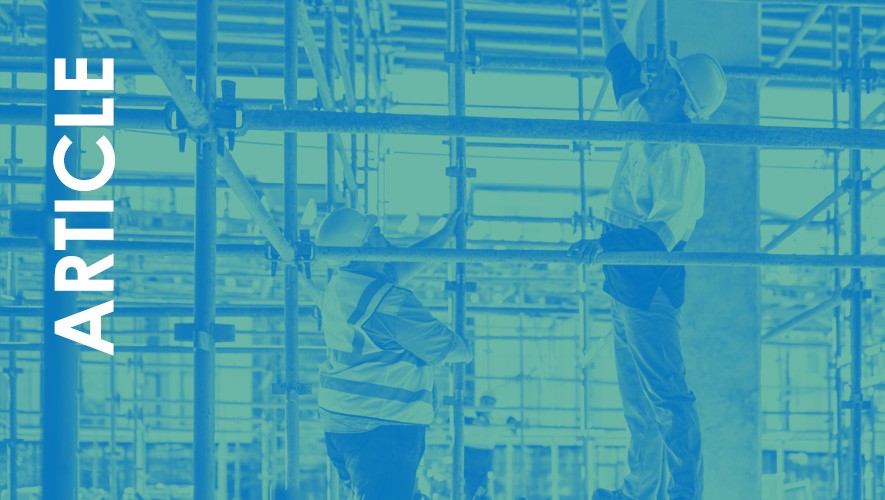Edited excerpt of an interview with Neil Jones, Senior CSR Manager at Walgreens Boots Alliance.
CC: Hi Neil, can you please describe your latest materiality process?
NJ: Our Corporate Social Responsibility Committee, which has governance of our sustainability agenda, expects us to do a formal materiality process at least every three years. We had done one in 2018, and last year decided to bring it forward. So in 2020 we performed a big materiality project, that took five months to complete. In light of the implications from the pandemic, as a global healthcarebusiness, it was important to listen to our external stakeholders, and lots of team members as well. And for the first time we used Datamaran, a software analytics platform that supports a data-driven and dynamic materiality process.
CC: And how exactly did you leverage this ESG data platform?
NJ: Datamaran’s patented technology enabled us to engage our stakeholders through a survey, helping define the material topics relevant to them. It helped us to identify the landscape of almost 100 topics that could be relevant. It is also enabling us to have an ongoing, dynamic process, as we are using continuously its horizon scanning capabilities in the US and UK, and are monitoring on a quarterly basis the topics that are increasing or decreasing in importance. This is in line with our approach to listen to our external stakeholders on a continual basis, as critical friends, having those dialogues all year round. Materiality for us isn’t just completing a formal project, it’s a live exercise.
CC: What were the key outcomes of this materiality exercise?
NJ: The feedback received from ongoing stakeholder engagement, the insights from the Datamaran analysis, as well as the new materiality assessment, showed us that human rights, diversity, equity and inclusion, digital innovation, and reducing the negative impacts of waste materials and plastic, are issues that have become increasingly important to our stakeholders.
CC: What actions are you taking, based on the quarterly online horizon-scanning?
NJ: It is rather early in our dynamic approach, but so far we have been able to update our CSR Committee on a regular basis, and that’s important so that they remain updated on the changes that are going on. We have also been mapping the relevance of topics across our main businesses, and this allows our teams to build into their plans.
CC: What are the key advantages of using ESG data tools?
NJ: It enables us to see trends on a more real-time basis, and to be in tune with many more external inputs than we would normally be able to. Because the world is changing so fast, if we only do this every two or three years, we risk missing emerging topics. It also gives a geographical view of what we are all about, so it doesn’t become dominated by just one or two countries. And by scanning the horizon early on in the 2020 process, it also widened the scope of our thinking, in line with the breadth of our ESG agenda, and with the concept of “dynamic materiality” that is taking over among major regulators both in the US and Europe.
CC: Can materiality be too dynamic? I mean, are the short-term shifts in trends always relevant for sustainability practitioners to keep on top of?
NJ: I think there is a slight danger of updating things too often, since our strategy has a one to three-year cycle, and changing things on a quarterly basis can become quite burdensome for the teams. So, it is a good temperature check, but we don’t change our strategy so often.
CC: Are there any shortcomings that you have identified related to the use of ESG data tools in the materiality process?
NJ: It is a quite labour-intensive process: it’s not just pushing a button, you have to translate what the data from the platform means. Datamaran definitely helps, but it’s like any other IT system: you only get out of it according to the time that you invest in it.
CC: Finally, what would be your key piece of advice for sustainability practitioners evaluating whether to adopt a more “dynamic” approach to materiality?
NJ: First, it is very important to plan ahead, and design in detail the overall materiality project, considering what types of other strategic pieces of work it feeds into, for example if it’s going to be used to help set annual objectives. Secondly, involving a real mixture of teams from within the organisation, as this is something that can’t just sit within the corporate responsibility team, but it must involve risk, investor relations, marketing, public affairs, finance, and all of the subject matter teams as well. So: plan it right, and get the right people involved, particularly if the findings of the project are going to be used in the company going forward. And regarding the use of ESG data tools, our biggest learning was to involve several key teams in the use of such platforms to share the knowledge, because if it just sits with one person, that could become too restrictive and prevent from maximising its benefits.


